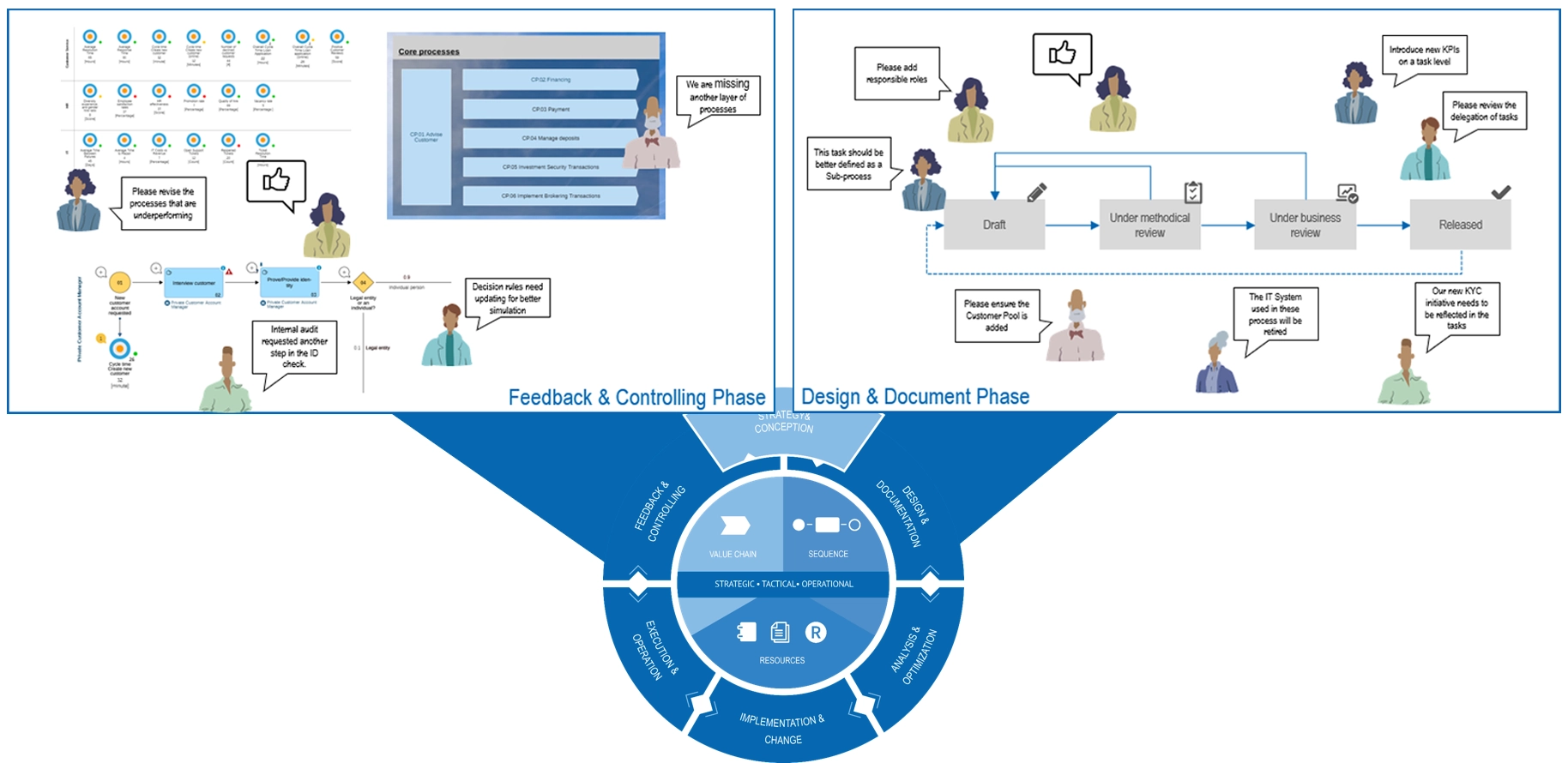Introduction
Working from home has reached unprecedented heights in recent years. If you’ve experienced it, or perhaps still are, you’ll probably agree that (despite its many benefits) working away from the corporate offices and colleagues can be quite a strain when it comes to effective collaboration.
And if you work in business process management, you may have struggled with the following challenge:
Management has asked you to revise the established processes and adapt them in light of recent operational changes. Since Business Process Management impacts the entire organization and involves various stakeholders, the task at hand required collecting input from different departments and colleagues. Along the way, you often felt ignored and have received no feedback – or a very late one, at best.
If this sounds familiar at all, and you’ve been fighting to foster a collaborative and efficient working environment, we’ve got some great practical tips for you!
Read on and learn our best practices for driving innovation, growth and excellence by engaging your peers in developing and documenting new processes, as well as assessing and monitoring the existing process portfolio.
Creating an engaging and inclusive BPM environment
Challenges like the one described above are unfortunately a reality, but the good news is that you are certainly not alone in this. There’s nothing that slows down progress like the lack of concrete input from the required departments. Sometimes, even sending dozens of emails doesn’t result in the desired response.
You could, of course, always schedule an online conference with your colleagues – where you open a sketching tool and try to gather the necessary ideas jointly. However, this is certainly not among the most effective and efficient ways to go about this. There needs to an easier solution for the problem. And we’ll share our take on it in the sections to follow.
Essentially, it all comes down to 2 things: a good plan and a capable toolset. Talking about tools, there are a few possible alternatives. One is to introduce a monitoring system that detects inefficiencies and problems in your existing processes. However, such systems are typically post-factual and don’t have a clear idea of the real root cause of your problems.
Therefore, from our perspective, the second option is a more viable. A system that allows you to solicit feedback, as you work on creating new processes. Such a system would provide you with a dedicated hub for discussion, feedback and insights, and allow those who want and need it to steer the evolution of existing processes accordingly.
BPM platforms such as ADONIS can be a game changer for efficient process teamwork. They provide comprehensive, integrated collaboration possibilities for Process Designers, Analysts and Process Owners in the course of improving existing, as well as designing new processes. What’s more, the collaboration aspects also extend to the employees, i.e. the “end consumers” of such information, enabling them to discuss and share their thoughts on the matter too.
How does such collaboration work in practice?
Share feedback directly in the creation process
BPM platforms allow you to make notes on your digital model right as you’re working on it. Be it a process diagramme, a customer journey, an end-to-end process landscape, or alike. Such instant feedback facilitates the design of new processes, and the revision of existing ones – as such activities are typically elaborated only in on-site, virtual or hybrid workshops. By adding notes directly in the model, you can not only work faster, but also overcome several time constraints.
Quickly gather inputs from colleagues
BPM tools also streamline your process communication and provide an explicit interaction point with your colleagues, encouraging them to answer necessary questions and/or offer further input on the topic. All colleagues involved are notified immediately as soon as a new message is received and they can respond either directly, or at a later point in time.
Ensure quality in your reviews
Once the first version of your new or revised model is ready for approval, it usually passes through a release workflow. Reviews are often divided into methodological and business reviews, and involve a series of checks to make sure that your model is coherent with some basic rules – like complying with relevant policies and regulations, for example. Collaboration features in BPM tools allow for quick, easy and direct feedback, resolving any issues that could cause unnecessary delays, inefficient feedback loops, or loss of information in printouts, emails, etc.
Summary
To make your BPM initiatives a success you need to establish a continuous improvement process in your organization. Often, the best ideas come directly from the ones involved in executing the processes: your employees! Therefore, you need to provide them with an easy way to get active and contribute with their thoughts, ideas and improvement suggestions, and give them access to the latest BPM information and processes.
By introducing a BPM suite that provides a set of collaboration capabilities you can directly involve all subject matter experts (SMEs) in the creation and publication of new content, and leverage internal knowledge to drive feedback and innovation from and between everyone in the organization.
If you are interested in boosting the engagement in your process work and starting your collaborative BPM journey, contact our experts and start democratizing your BPM today!






